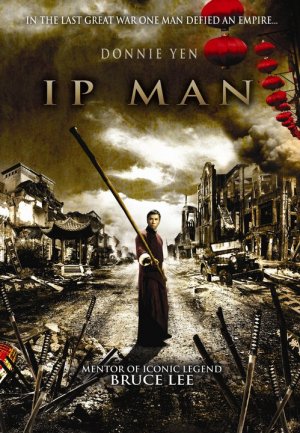The Federal Circuit recently addressed the In re Hilmer, 359 F.2d 859 (CCPA 1966) case in its decision in In re Giacomini, 2009-1400 (Fed. Cir. July 7, 2010). In re Hilmer stands for the proposition that a U.S. patent claiming priority to a foreign application has a 102(e) date as prior art as of its U.S. filing date rather than the foreign application filing date. In contrast, such a U.S. patent has a priority date as of the date of the foreign application filing date. This has led to the analogy that a foreign application can be used as a shield but not as a sword.
In In re Giacomini, the Federal Circuit noted that a U.S. non-provisional patent application claiming the benefit of a U.S. provisional application is accorded an effective 102(e) date as of the filing date of the U.S. provisional application. And, the U.S. non-provisional application is also entitled to the priority date of the U.S. provisional application. Hence, the U.S. provisional application can serve as both a shield and a sword.
Because various treaties require that foreign applications be treated the same as domestic applications, this has raised the issue of whether In re Hilmer is still good law — especially in view of the In re Giacomini decision. Since not all foreign countries are signatories to the various treaties with the U.S., the analysis may boil down to an analysis of which foreign country serves as the basis for the priority patent application. To phrase that another way, In re Hilmer addressed all foreign countries. The proposed change in the law is based on according treaty members equal treatment based on treaties to which those select foreign countries are signatories with the United States. Since not all foreign countries were signatories to those treaties, the prior art effect of U.S. applications claiming the benefit of foreign applications that were filed in non-signatory countries might still need to be analyzed under In re Hilmer.
The panel in In re Giacomini wrote the following with respect to In re Hilmer:
Giacomini’s distinction between priority date and ef-fective reference date largely stems from In re Hilmer, 359 F.2d 859 (CCPA 1966). The issue in Hilmer was whether a U.S. patent, cited as a section 102(e) prior art reference, was effective as of its foreign filing date under section 119. Id. at 862. This court’s predecessor rejected the Board’s conclusion that “the foreign priority date of a U.S. patent is its effective date as a reference.” Id. at 870. The court instead held that “Section 119 only deals with ‘right of priority.’ The section does not provide for the use of a U.S. patent as an anticipatory reference as of its foreign filing date.” Id. at 862. Thus, Hilmer distinguished a patent’s priority date under section 119 and effective reference date under section 102(e) in cases involving an earlier foreign application. Giacomini equates a U.S. provisional application to a foreign patent application to argue that the Tran provisional’s filing date is not the Tran patent’s effective date as a prior art reference.
But at the time this court’s predecessor decided Hilmer, section 119 only governed the benefit of claiming priority to an earlier filing date in foreign countries. Id. at 862. Congress added section 119(e) along with the enactment of provisional applications in 1994. See Uruguay Round Agreements Act, Pub. L. 103-465, 108 Stat. 4809 (1994). Therefore, broad language in Hilmer concerning section 119 is not applicable to provisional applications. Also, Giacomini misses an important distinction between Hilmer and the present case. Hilmer involved an earlier foreign application while the present case deals with an earlier U.S. provisional application. See Klesper, 397 F.2d at 885 (Hilmer clarified that “domestic and foreign filing dates stand on entirely different footings.”).
Section 102(e) codified the “history of treating the dis-closure of a U.S. patent as prior art as of the filing date of the earliest U.S. application to which the patent is entitled, provided the disclosure was contained in substance in the said earliest application.” Id. (emphasis added). According to Hilmer, an earlier foreign application does not shift a corresponding patent’s effective reference date because section 102(e) explicitly requires the earlier application to be “filed in the United States.” Hilmer, 359 F.2d at 862 (quoting 35 U.S.C. § 102(e)). This court’s predecessor warned that section 119 cannot be read with section 102(e) to modify the express domestic limitation. Id. In contrast, an earlier provisional application is an application “filed in the United States.” 35 U.S.C. § 102(e). Treating a provisional application’s filing date as both the patent’s priority date and its effective reference date does not raise the alleged tension between sections 102(e) and 119. Given the “clear distinction between acts abroad and acts here,” Hilmer, 359 F.2d at 879, Giacomini’s reliance on Hilmer is misplaced. Id.
Accordingly, the Tran patent has a patent-defeating effect as of the filing date of the Tran provisional, or September 25, 2000. Giacomini did not file his application until months after Tran filed his provisional application. Giacomini is not the first to invent in the United States and thus is not entitled to a patent. Because this court affirms the Board’s finding of anticipation based on the Tran patent, this court will not review the Board’s finding with respect to the Teoman patent.
You can listen to Chief Judge Rader, Judge Gajarsa, and Judge Dyk discuss the viability of In re Hilmer with PTO Associate Solicitor Thomas Stoll here: [Listen].
You can read the In re Giacomini opinion here: [Read].
